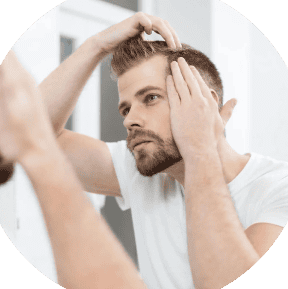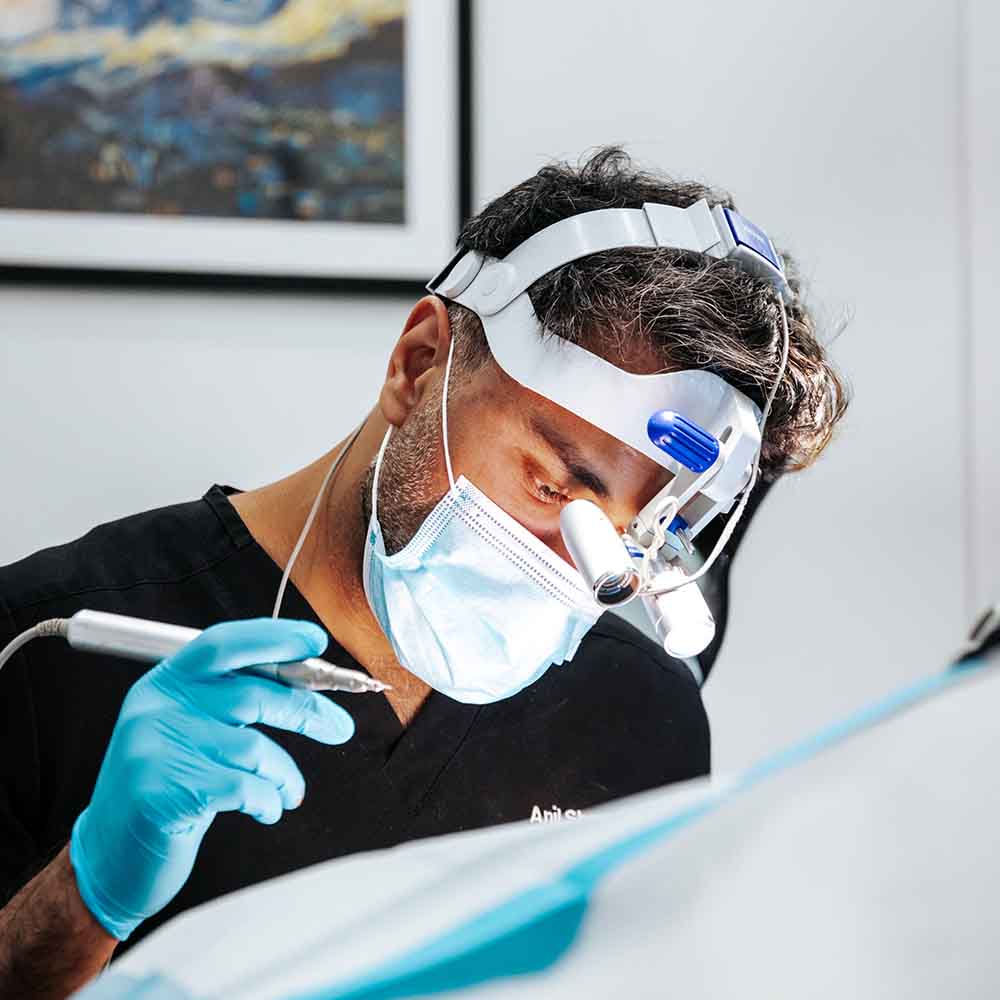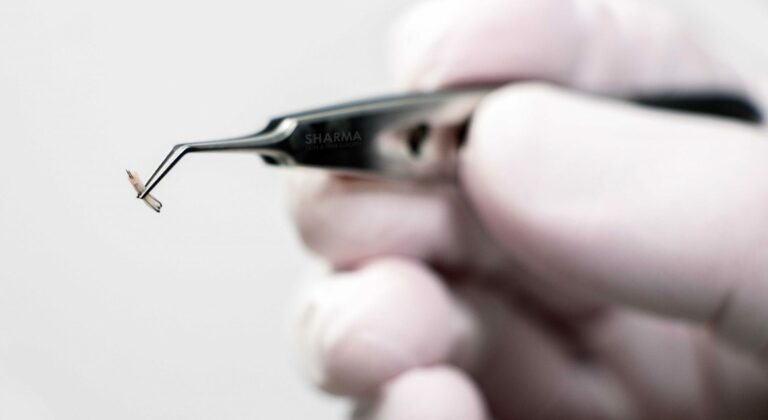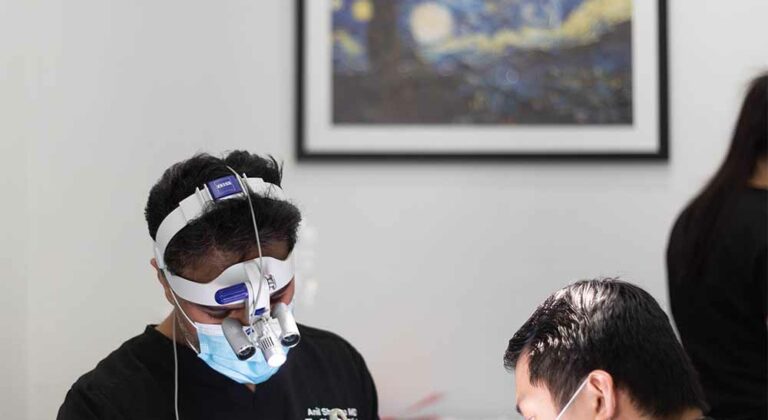Thinking about getting a hair transplant but worried about pain? You’re not alone. Many of our patients have the same concern. While it’s natural to feel a bit apprehensive, understanding the procedure and its associated discomfort can help alleviate your worries.
The good news is that hair transplant procedures are generally considered to be relatively pain-free. While some discomfort is to be expected, local anesthesia is used to numb the donor and recipient areas, so the most you’ll feel is a little pulling or pressure.
How much you can feel also depends on the transplant method being used. Knowing what to expect from these procedures can help you decide which one is right for you. This article breaks down the two main hair transplant methods, how pain is managed before and after surgery, and the other factors which can influence pain levels.
Hair transplant methods
There are two primary methods for hair transplantation: Follicular Unit Extraction (FUE) and Follicular Unit Transplantation (FUT). Advancements in anesthetic techniques ensure that there is minimal pain associated with both treatments, but sensations differ due to the number and location of incisions.
- FUE: During a FUE procedure, hair follicles are extracted one at a time from a donor area (typically the back of the head) and then transplanted into thinning or balding areas. Since this technique only requires small incisions, recovery times are shorter and discomfort levels are relatively low.
- FUT: During a FUT procedure, hair follicles are transplanted from a strip of scalp taken from the back of the head. The strip is then dissected into follicular units and transplanted to the desired location. Due to the wider incision, it may cause more noticeable discomfort. However, with the right anesthesia, the sensation can be minimized.
There are differences in pain levels associated with FUE and FUT procedures. As there are fewer incisions, patients often report that FUE is less painful both during and after the treatment. However, if your surgeon recommends FUT, rest assured that it can be performed under anesthesia to minimize discomfort.
Other factors influencing pain levels
Several factors may influence the level of discomfort felt during and after a hair transplant procedure:
- Individual pain tolerance: Each patient experiences pain differently. Those with a higher pain threshold might find the process more comfortable than others.
- Skill and experience of the surgeon: A highly skilled surgeon like Dr Sharma can minimize pain through precise techniques and careful handling of the scalp.
- Extent of the procedure: Procedures involving more grafts may result in slightly higher discomfort levels due to the extended time required.
- Patient’s health and healing capacity: Patients who have good overall health and a strong healing capacity may experience less pain and recover more quickly.
How is pain managed before and during the procedure?
Before the procedure, a local anesthetic is used to numb the area. While this injection may cause a brief stinging sensation, the surgery itself is typically pain-free.
During the procedure, it’s normal to feel sensations like pulling or pressure, especially when the hair follicles are extracted and implanted. While noticeable, these sensations are generally pain-free and vary depending on the patient’s sensitivity.
Is recovery from a hair transplant painful?
Post-surgery, it’s common for patients to report feeling some initial pain or discomfort in the treated areas. This typically lasts for a few days, and any lingering sensations of tightness or swelling usually subside within a week.
Pain levels are usually mild and manageable with painkillers prescribed by your surgeon. During the recovery phase, it’s also normal to experience some itching and tenderness as the scalp heals.
It’s important to be aware that scarring is a potential side effect of both types of hair transplant. FUT procedures may result in a linear scar, while FUE typically leaves behind tiny, dot-like scars — both types of scars eventually heal.
Tips for minimizing discomfort after a hair transplant
To minimize discomfort and reduce the risk of complications after a hair transplant, it’s vital to adhere to your surgeon’s post-operative guidelines. Some tips for promoting optimal healing include:
- Take prescribed pain medication as directed by your surgeon. This will help manage discomfort and ensure a more comfortable recovery.
- Avoid touching or scratching the scalp, as this can irritate the delicate grafts and impede the healing process.
- While sleeping, elevate your head on a pillow to reduce swelling. Using a soft pillow will prevent pressure on the transplanted area.
- When washing your hair, avoid rubbing or scrubbing and use a mild shampoo and conditioner as instructed by your surgeon.
- Use a broad-spectrum sunscreen to shield the transplanted area from harmful UV rays.
- Avoid smoking and excessive alcohol consumption. These can hinder healing and increase the risk of complications.
- Consume a balanced diet rich in nutrients to support healing.
- Drink plenty of water to keep your body hydrated and aid in recovery.
- Rest and allow your body ample time to recover by limiting strenuous activities for the initial days following the procedure.
By meticulously following these guidelines, you can ensure a comfortable and efficient recovery.
BOOK NOW
Talk to a Hair Transplant Expert
Are you looking for the most effective treatment plan to reverse the effects of hair loss? Dr. Sharma has a long-lasting commitment to offering the best services in the industry. Not only is he experienced with hair loss treatment, but he is passionate about helping each patient receive excellent results.

Share this:
Medically reviewed by
Updated on
Have a question?
Find out how we can help you look feel your absolute best
Contact us 780-476-7970


